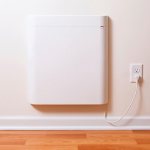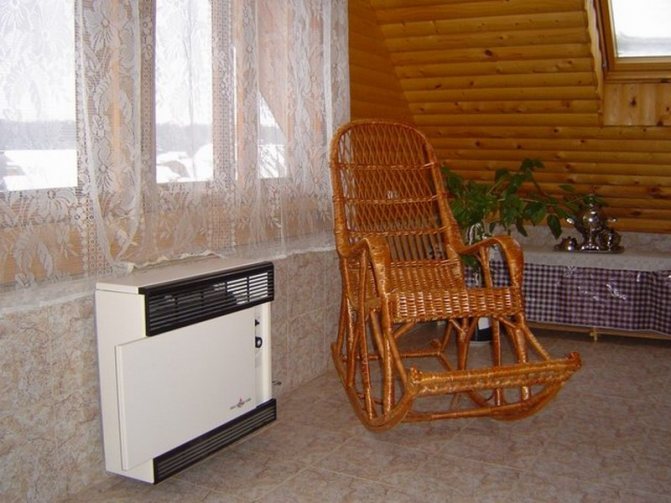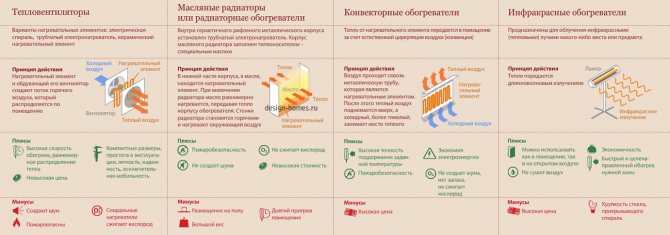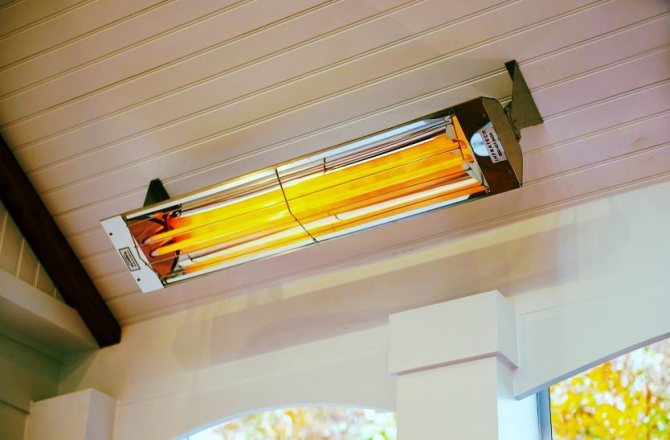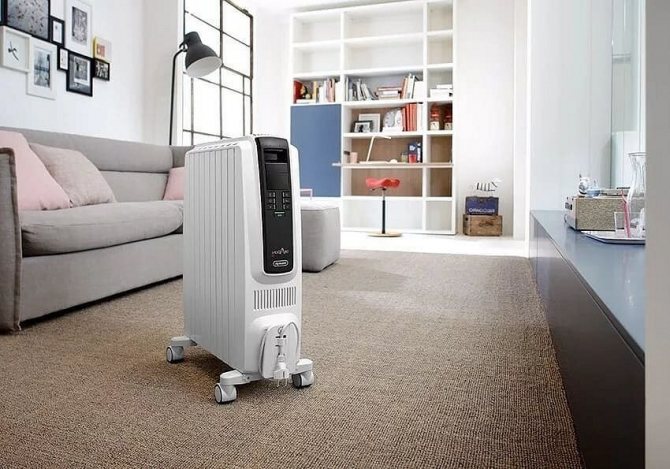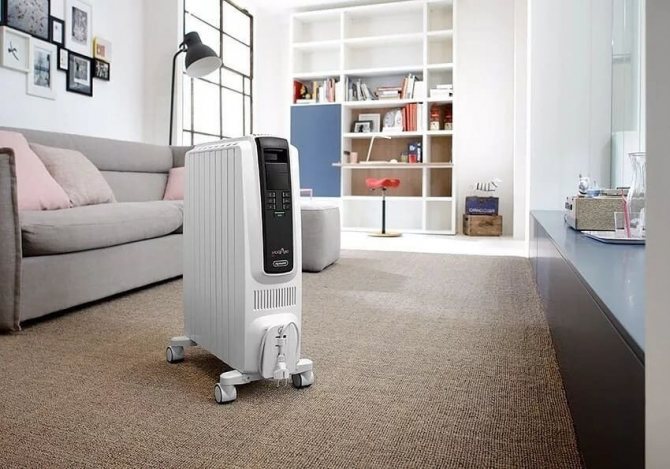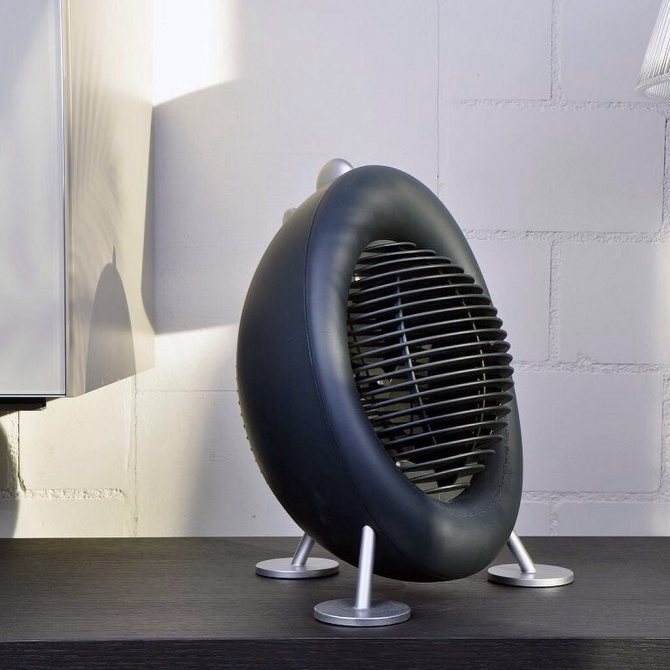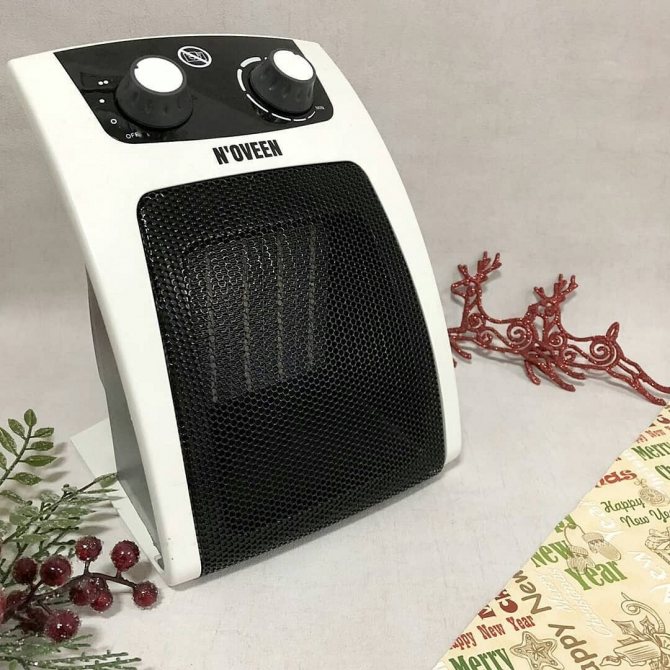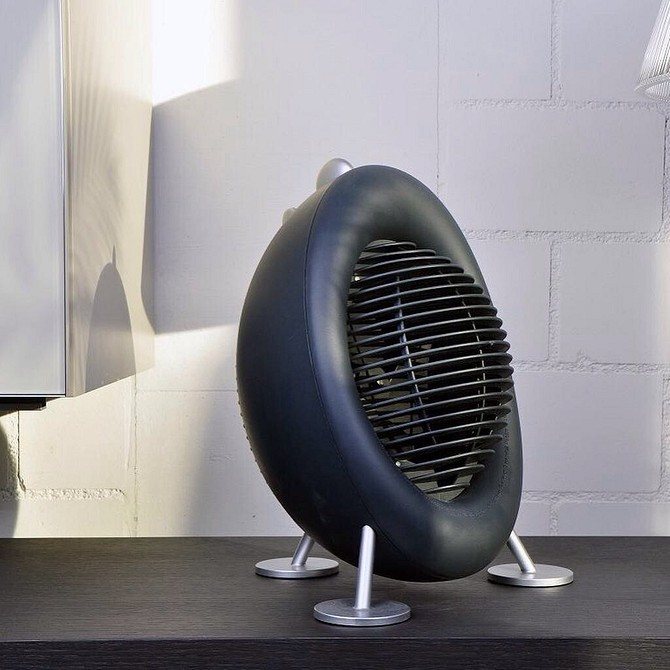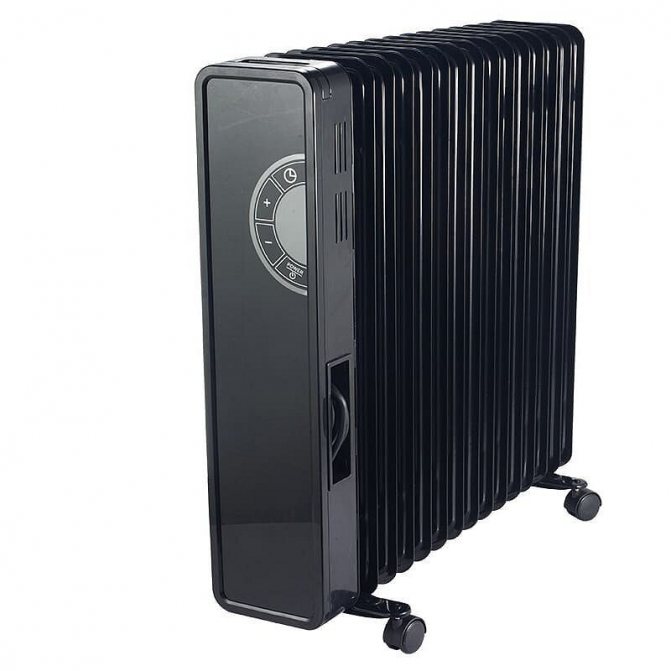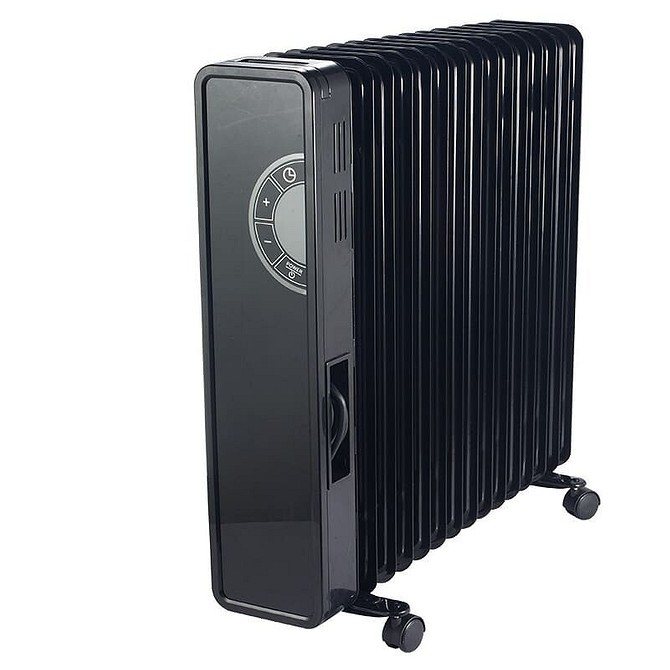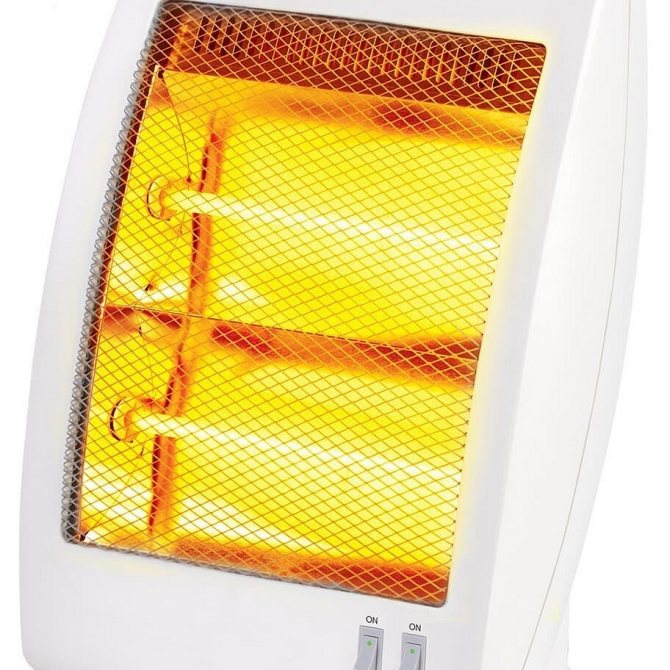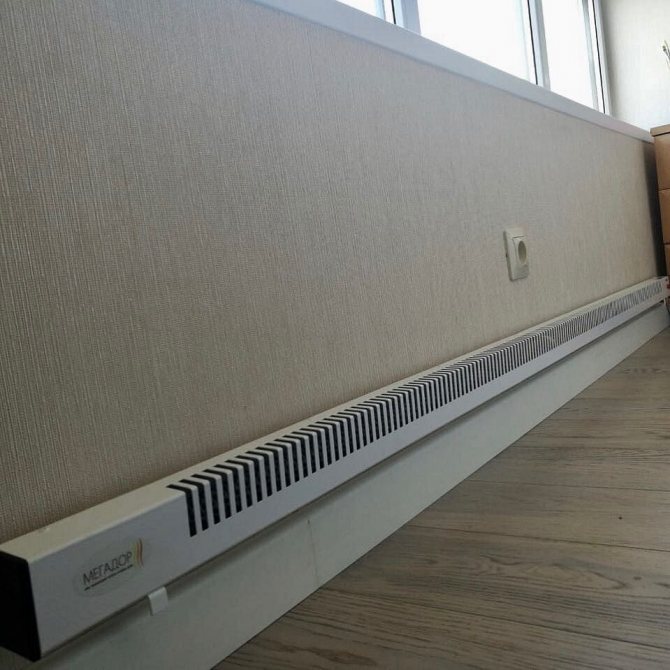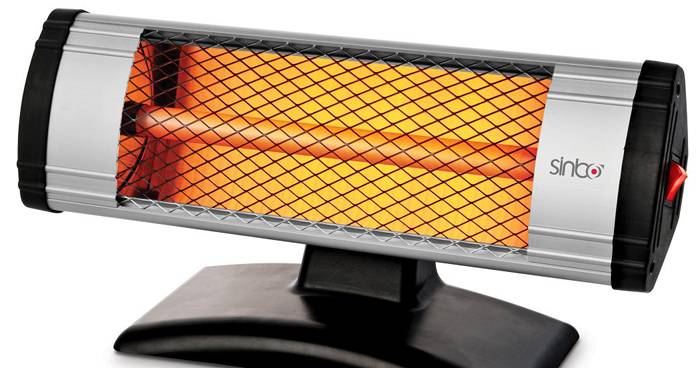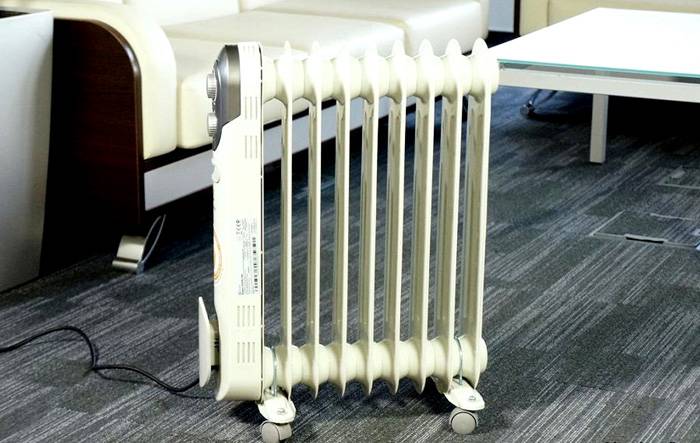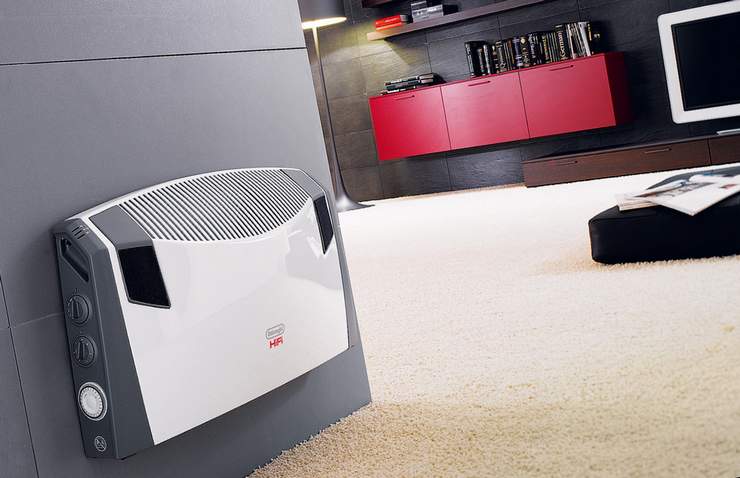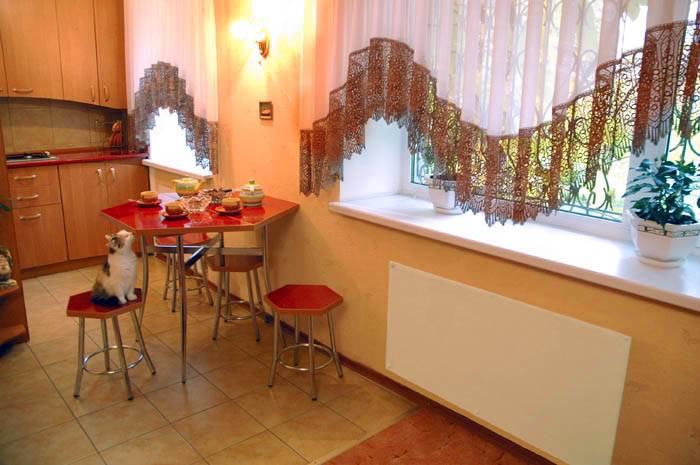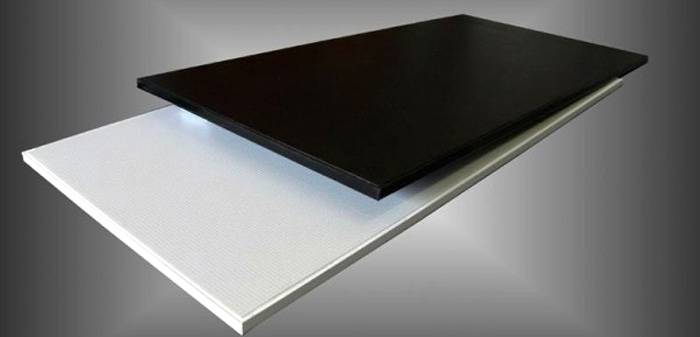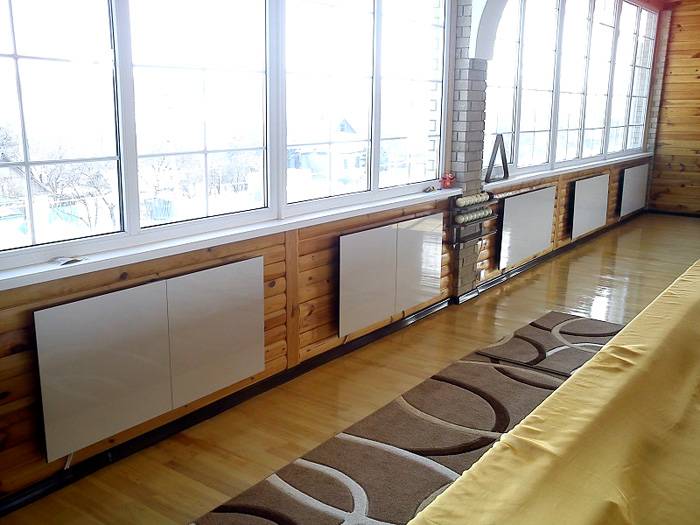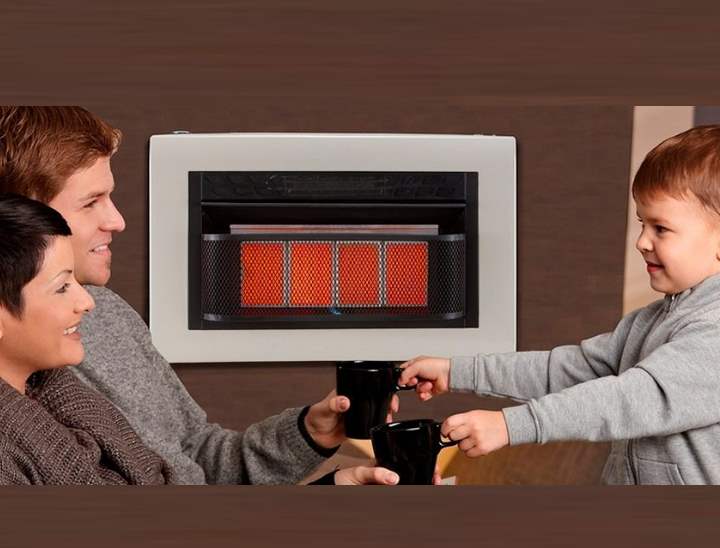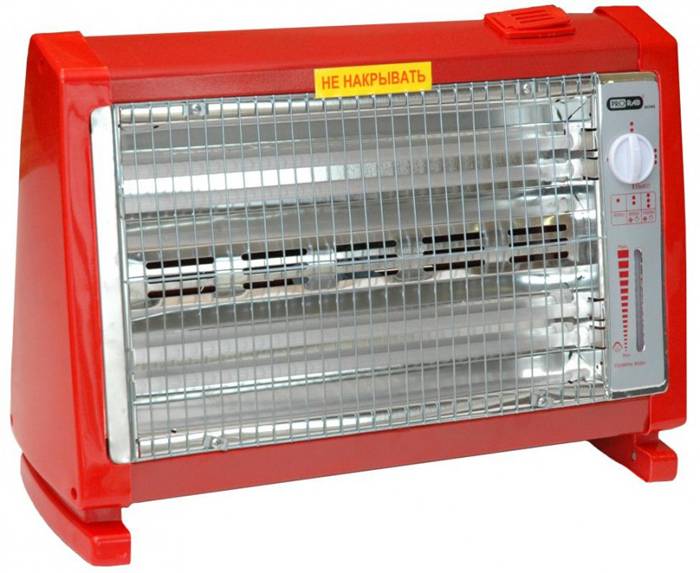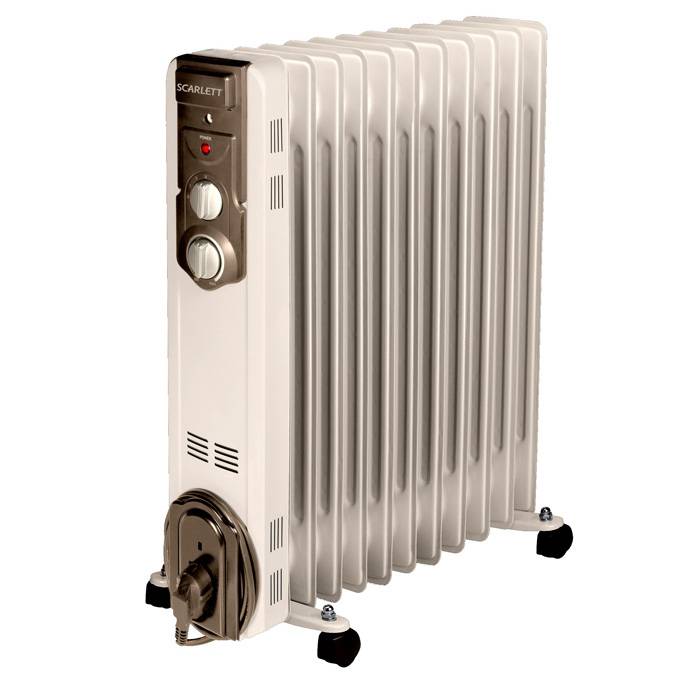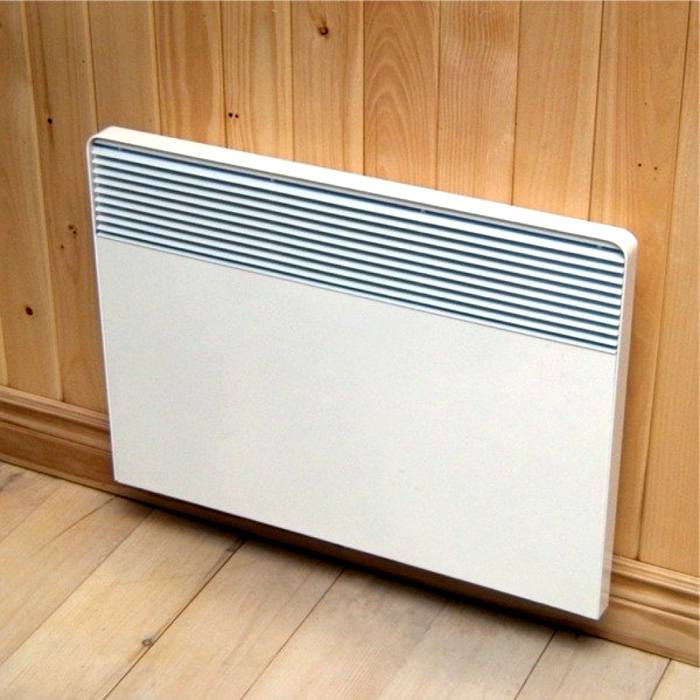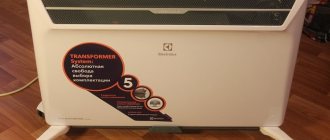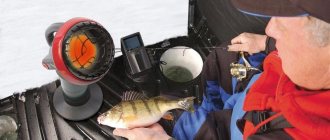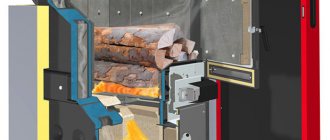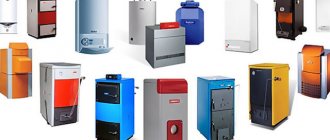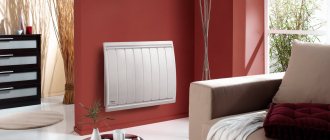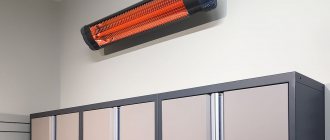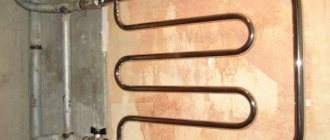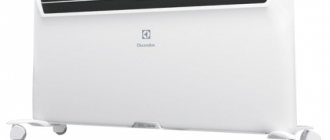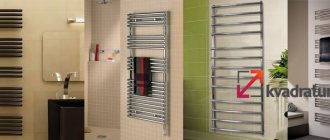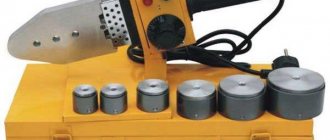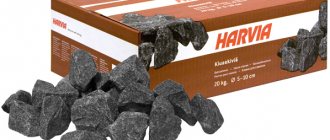Types
Today, the most popular are relatively economical and
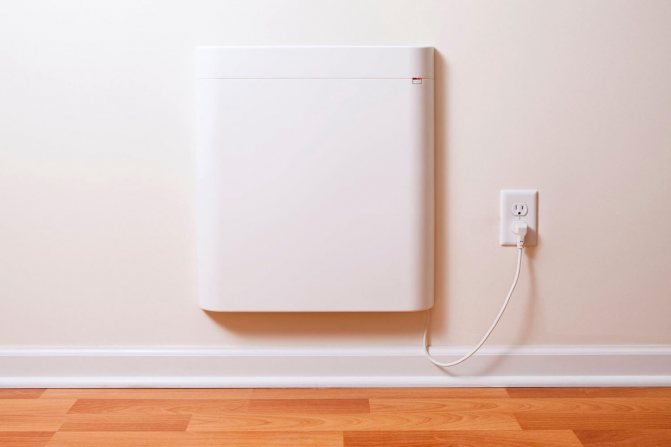
universal electric heaters:
- oil;
- infrared;
- ceramic;
- convectors;
- fan heaters;
They all have different power and efficiency, but which one is the best? Let's try to figure it out.
Economical and energy saving heaters
An important aspect when choosing a heater for an apartment is the economical consumption of electricity during operation. Energy-saving options include an infrared heater, a convector, devices with a micathermic heating element.
The most economical option can be considered a ceramic panel, energy consumption for a room of 20 squares is only 1 kW per hour of operation. In addition, this option has a stylish design and will look good in the interior of the apartment, as well as it is durable.
Infrared heaters
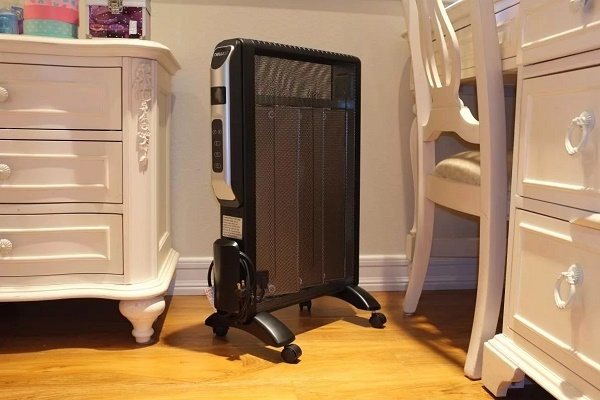

There are several varieties of such devices now. They are:
- halogen;
- tubular;
- quartz;
- ceramic;
- film.
But the principle of operation is the same - all of them, without exception, produce infrared radiation, and it, in turn, heats objects that fall within the reach. The latter already give off heat to the air. In general, the sun's rays act in the same way.
Infrared light is practically harmless, but you should still avoid prolonged exposure to the type of heaters in question. They can even be installed on the ceiling - the main thing is that opposite (within a few meters) there is a surface that could accumulate and then give off heat.
Most likely, today the industry does not produce anything more economical than infrared devices.
Their advantages and disadvantages:
- average room heating rate;
- low power consumption;
- rapid cooling;
- does not dry the air;
- works silently;
- the price is high.
Oil
The oil cooler is a metal casing filled with mineral oil. The apartment is heated by heating the liquid, warm air from the heated walls of the device naturally spreads through the room.
Pros:
- A budget option,
- Does not "eat" oxygen,
- Silent,
- Safe.
Minuses:
- Heats up slowly
- Heavy,
- Bulky,
- Does not tolerate high humidity.
Most often, oil heaters are used floor-standing, this is the most convenient option for use in a city apartment, the device has a mobile base. They also make models with wall and ceiling mounts, table and for a children's bed.
Fan heater
This type is able to very quickly heat the air in the room, but it is difficult to refer to the category of economical fan heaters. In addition, literally a few minutes after shutdown, the room is guaranteed to cool down.
In general, the principle of operation of the thermal fan is similar to that used in the previously described convectors. The only difference is that in this case the air is forced in and passes through the spiral, which is literally red-hot.
In more advanced models, karmic plates are used. Their temperature is not too high, but due to the higher heat dissipation, the efficiency is better.
The electrical appliance in question is probably ideal for apartments as an additional source of heat, which is much needed in the off-season.
So, the fan heater:
- heats up the room quickly;
- consumes a lot of electricity;
- does not save heat;
- makes noise;
- is cheap.
Convectors
Convenient and safe type of heater for use in an apartment. It works on the principle of air passing through the heating element, which rises at the outlet, pushing cold air to the bottom.
Pros:
- Silent,
- Safe,
- Has no unpleasant odor,
- Eco-friendly,
- Precise temperature control,
- Does not "eat" oxygen.
Minuses:
- High energy consumption,
- Location only near the outlet.
Heating element types:
- needle,
- monolithic,
- dry heating elements.
The needle type is characterized by fast heating and low cost, but such a heating element does not tolerate water and high humidity.
Tubular heaters (TEN) are durable and not so afraid of moisture, but they should not be installed closer than 1 meter to the water source. Unlike the needle type, the elements do not heat up so much.
The heating element of the monolithic type is distinguished by its durability, quiet operation, as well as minimized heat loss.
Thermostat
The thermostat helps to maintain the most comfortable temperature in the apartment. After a certain period of time, about a minute, the sensor measures the air temperature and if it is below normal, the heating element turns on. The cost of an electronic thermostat is higher than a mechanical one, but this type is accurate and quiet. A mechanical thermostat does not have the ability to accurately determine the temperature.


In the photo on the left - an electronic thermostat, on the right - a mechanical one.
Types by design:
- wall,
- floor.
The floor-standing version is convenient for mobility, it is easy to move it around the apartment. When purchased, as a rule, the set includes a wall mount and a stand for floor use. The wall-mounted version saves space in the apartment and looks neat, the device is mounted 10-15 centimeters from the floor.
Useful options: Modern compressors are packed with additional features such as overheat cut-off, cut-off on cut-off, ionisation and air filtration. These functions will secure the apartment and maximize comfort.
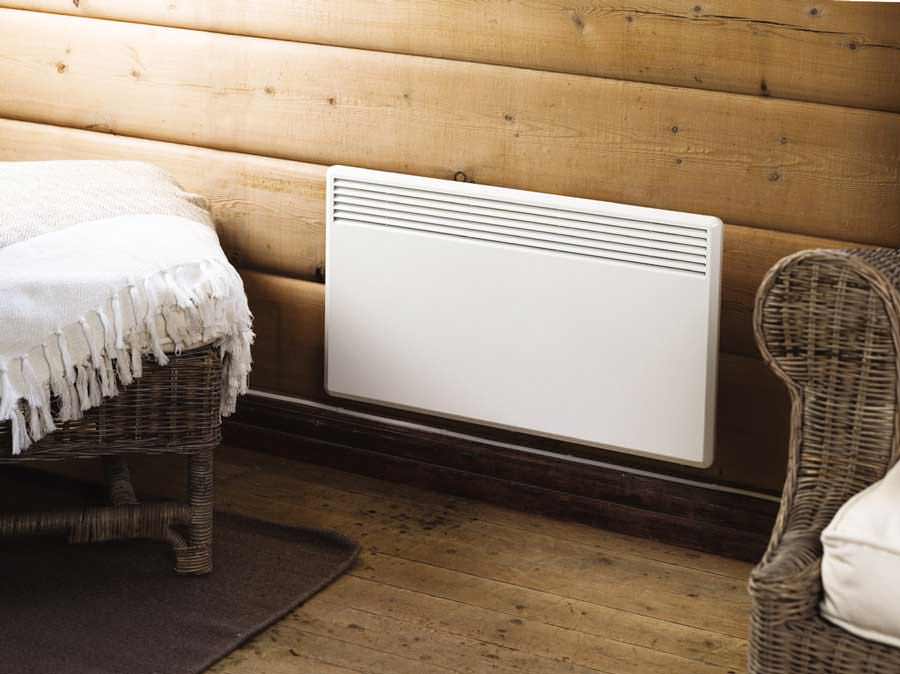

Ceramic heater
He uses ceramic plates in his work. After switching on, they quickly reach operating temperature and begin to give off heat to the air. In parallel, the heating element also generates infrared rays, which increases efficiency.
In simpler products, only natural air circulation is assumed; in expensive ones, an additional fan is installed. After turning off, the device cools down rather slowly, which should be considered an advantage.
The disadvantages include the extremely high cost.
Use in various rooms
| Room | Suitable heaters |
| Living room | Almost any type of heater is suitable for a living room. Depending on the area of the room, the best option would be a compact fan heater or convector. Models with wall or ceiling mount look stylish. |
| Bedroom | It is convenient to use mobile devices in the bedroom. Since this is a resting place, the heater should be as quiet as possible and without backlighting. The best option would be a convector with an electronic thermostat. |
| Kitchen | For a small kitchen, a desktop fan heater will be enough, it does not take up much space, if necessary, simply move it to another room or remove it. |
| Children | In the children's room, it is important to use heaters that do not heat up the device body much. It is absolutely not necessary to install the oil and infrared type. |
| Bathroom | In the bathroom, models are used that are resistant to humidity. Ceiling infrared heater is suitable for use. |
Volatile devices
There is an opinion that if a heating device for the operation of which electricity is used is economical, it means that it consumes a small amount of this resource. But this is not true.
Attention: The amount of electricity required for heating will depend on the power and intensity of the heater.
That is, if you are offered to buy an economical electric heater, this does not mean that it will be "less" gluttonous than other types of these devices.
Heating devices that use electricity for their work include:
- oil heaters;
- ceramic panels;
- fan heaters;
- quartz heaters;
- convectors;
- IR heaters.
Economic devices are also those that are able to maintain the desired temperature in the room without unnecessary energy consumption. This is usually possible due to the presence of automation. But if you intend to save money, then you should not choose heaters, quartz and ceramic panels, as they cool and heat up for a long time. In addition, they do not have too much convection and the use of electricity is irrational and it is impossible to save well.
As an energy-saving heater for an apartment, a convector has proven itself well, which makes it possible to maintain the desired temperature regime. This type of heater is characterized by fast, uniform and efficient heating of the entire room. Due to the presence of a thermal sensor, the device is able to automatically turn on and off when the maximum or minimum temperature is reached. The convector uses energy efficiently and can rightfully be considered one of the most economical heaters for an apartment.
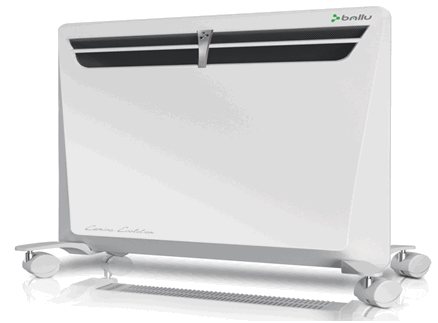

If you need to quickly warm up the room, you can use an infrared heater or fan heater. The latter heats the air, and the first, the objects in the zone of its radiation. But when choosing an infrared heater, one must not forget that the required temperature regime in the room will be maintained only during its operation. After the IR heater is turned off, the temperature will drop quickly. Fan heaters are free from this drawback.
Often, a heater is needed to maintain a comfortable temperature in the apartment in the off-season, before the centralized heating starts to work. Although often a climatic device is used if the centralized heating system does not cope and the apartment is cool.
It is not difficult to choose heaters for an apartment. Liquid fuel devices should be discarded immediately. Their use in the apartment is irrational. They are well suited for heating country houses, private houses, etc.
It is also not recommended to use such energy carriers for heating an apartment as gas.
Attention: It is most reasonable to use for this purpose electricity and the devices that work on it, for example, convectors, oil radiators or infrared heaters.
Fan heaters have also proven themselves quite well.
Comparative table of characteristics of heaters
| Power consumption | The cost | Operation volume | Air heating | Device mobility | Disadvantages | |
| Oil heater | Low | Average | Low | Slow | Average | Kicks up dust |
| Convector | Average | High | Low | Slow | Average | Kicks up dust |
| Fan heater | High | Low | High | Middle | High | Kicks up dust |
| Infrared heater | Average | High | Low | Fast | Individually (depending on dimensions) | Long exposure to infrared rays is harmful |
Before choosing the most successful option for yourself, it is worth considering all the necessary parameters.If there are children in the apartment, then it is better to give preference to ceiling and wall models, and in rooms with high humidity it is worth staying at the safest option. A properly selected heater will be harmless and will quickly fill the apartment with warmth.
How to choose a heater for your home: classification
Appliances for space heating differ according to the principle of heat transfer:
- The air is heated in contact with the heated working surface of the heater, as in conventional apartment central heating batteries. The performance of such devices depends on the size of the contact surface or the temperature rise. Which is not always beneficial in both cases. The most widespread are models oil coolers;
- With convection heating, a stream of hot air is created with the help of a heating element, rising to the ceiling, and cold air takes its place in the device. The movement of hot and cold streams provides a fairly rapid heating of the premises. In such electric heaters, the heating element is placed in a protective metal case;
- The operation of fan heaters is compulsorily based on the spread of hot air flows. In them, the air, passing through a heated spiral, heats up and then is accelerated by a fan through the room. This contributes to the rapid heating of the apartment.
- The operation of infrared heaters is based on the principle of transferring heat to surrounding objects, and to the surrounding air. The effect is achieved by spreading long infrared waves... In this case, not the entire room is warmed up, but only the objects at which the device is directed.
How to choose an oil heater for an apartment
This type of heating appliance can have a different number of sectional compartments depending on the size of the room and in appearance makes them similar to central heating radiators. As the number of sections increases, the heat transfer improves. Most of the oil radiators are equipped with casters, so they are quite mobile and can be installed anywhere in the apartment. But at the same time, they have significant dimensions and significant weight and can make it difficult to move around the house.
The main heat carrier in oil heaters is mineral oil, which, together with a heating element - heating element, is enclosed in a metal case. Heating up, the heating element gives off heat to the oil, which transfers it to the body, and the surrounding air heats up from the body in all directions. In all models, especially in inexpensive ones that do not have a thermostat, the oil heats up very much and when the body comes into contact with the body, you can easily get burned, therefore, oil radiators are not recommended for use in rooms for children. Children are curious and the protective cover can only partially solve the safety problem when touching the device.
One of the drawbacks of oil heaters is the slow reaching of the operating temperature, but if a timer and a thermostat are provided in it, the device will turn on on its own and warm the apartment to a comfortable temperature by the arrival of the owners, which is very good and convenient.
A good property of oil coolers is the ability to work around the clock and the preservation of heat transfer for a long time, since the oil cools down for a long time. They do not make noise when working, do not dry out the air and reliable.
Oil heaters are most popular among the population due to their low cost and ease of use.
Electric convector heaters
The operation of convectors is based on the physical law of natural convection. Cold air enters the device through special gaps at the bottom, comes into contact with the heating element, becomes hot and, according to the laws of physics, rises to the ceiling. The same principle applies to conventional batteries.
The heating element - ten - is located inside the metal case, so the outer surface of the heater does not heat up as much as that of an oil appliance. A built-in thermostat helps maintain the desired temperature. The heating element itself is often equipped with additional metal ribs.
When choosing convectors as a home heater, it should be borne in mind that:
- The convector heater has compact dimensions and is easy to install indoors.
- The big advantage of these devices is their quiet operation and built-in overheating protection.
- Convectors do not take much time to warm up the heating element to the operating temperature, but the air in the room heats up for a very long time. Therefore, they are not suitable for heating a large room.
- The disadvantages include overdrying the air.
You can buy a convector heater at an affordable price. They are different in design, they can be floor-mounted on castors or wall-mounted.
Fan heaters
Thermal fans can heat up a room very quickly. The air passes through the heated spiral and, already hot, is forcibly and quickly accelerated by the fan blades around the house. The dimensions of the device depend on the size of the fan blades. Models such as heat guns are capable of quickly heating even large rooms.
Heating elements of a fan heater can be of several types:
- The metal spiral is used in inexpensive models. It is not completely enclosed by the casing and therefore fire hazardous if foreign objects enter it. Under no circumstances should such devices be left unattended. In addition, due to the burnout of the spiral and the smallest particles that fall on it, an unpleasant burning smell may appear;
- when equipping a fan heater with a heating element, the reliability, safety and durability of the device increases;
- a ceramic heater is the most environmentally friendly among fan heaters, but its cost is quite high.
Household heat fans are the most inexpensive of electric home heaters; budget models are usually made of plastic, while more expensive models are made of metal.
In modern fan heaters, you can adjust the temperature of the heating element and the strength of the air flow. By turning off the heating element, the device can be effectively used as a fan.
The disadvantages of thermal fans include the creation of an increased background noise during operation. When the room is heated, the devices quickly overheat and cannot work continuously. When the fan is running, dust inevitably rises in the apartment, which is especially harmful if people with respiratory diseases live in the apartment.
Infrared heaters
These devices work using the radiation of infrared waves. Radiation instantly heats up all objects that are in the way. The presence of a person in the radiation area may cause overheating. You can use infrared heaters in an apartment or on a loggia, balcony, terrace. The biggest plus of these heaters is their complete noiselessness, absence of dust, rapid heating of everything that is in the area of exposure to waves. If you do not need to heat the entire room, then this option is worth considering. Especially infrared radiators are suitable for children's rooms and bathtubs.
However, infrared heaters have the highest cost of all heater varieties. They are produced in ceiling, wall or floor versions and they do not take up much space.

